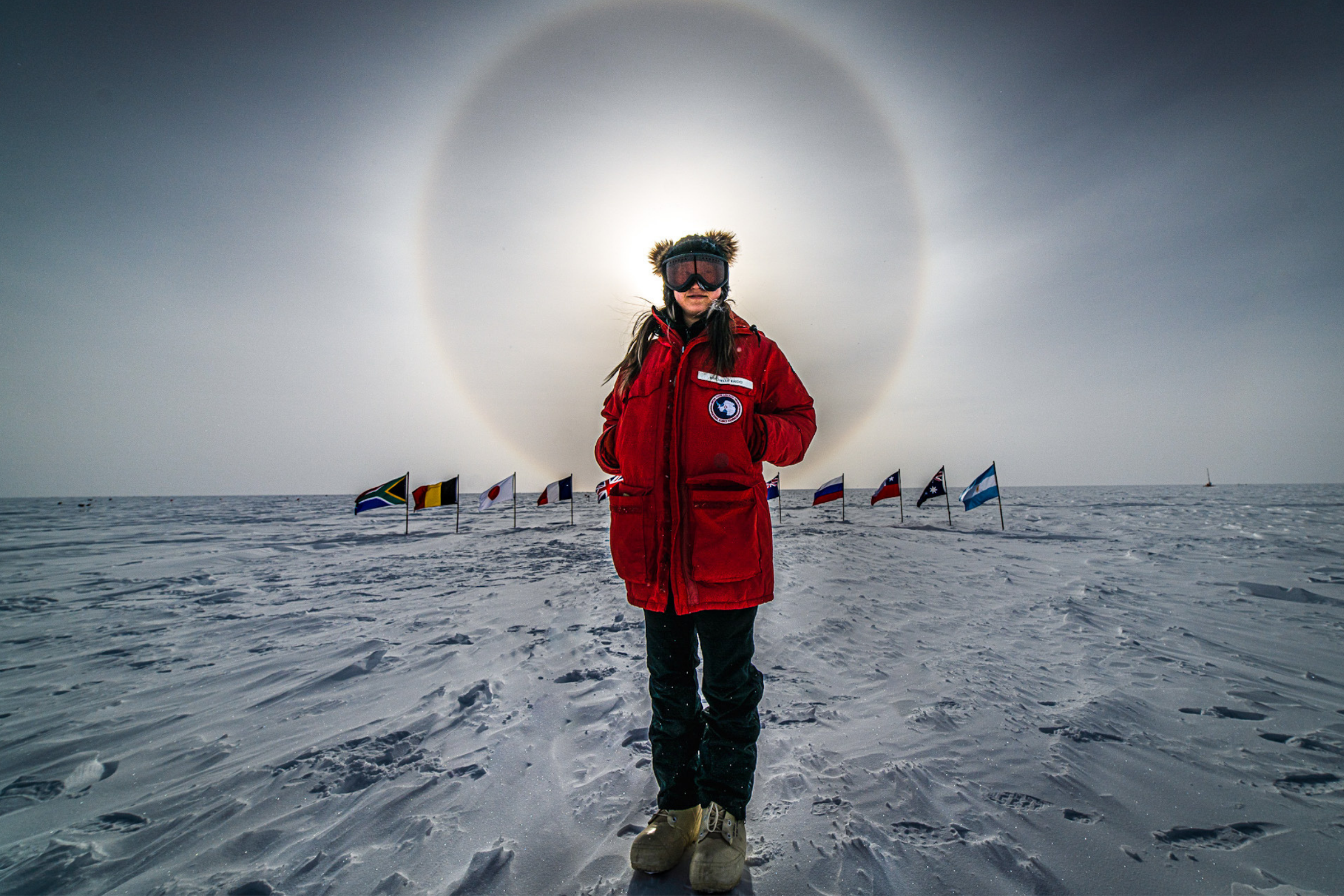Many people dream of adventure, or a change of scenery from their hectic lives, but would you spend a year living in the challenging conditions of the South Pole?
Michelle Endo, 32, originally from San Francisco, is about to complete a year living at the South Pole. She has been working as the hospitality manager at the Amundsen-Scott South Pole Station as part of the National Science Foundation’s U.S. Antarctic Program (USAP).
“I first found out about the U.S. Antarctic Program in 2019 when I was working on cruise ships,” Endo told Newsweek. “I’d seen the Antarctica episode of Anthony Bourdain’s Parts Unknown where he visited both McMurdo and Amundsen-Scott South Pole Stations.
“I realized this was my ticket to Antarctica,” Endo added. “Up until then, I’d been able to find jobs that had taken me to six continents, all without me having to pay out of pocket to visit these places. Antarctica was my last continent, and getting a job there would allow me to go for free. Despite the harsh conditions, I love going for walks, especially when the auroras are out.”
In a video posted to her Instagram with over 43,760 likes, Endo says that her days start by grabbing her radio and water bottle. She also says “hi to Sam,” who she reveals is a possum pelt draped over a Roomba, an automated vacuum.
Endo then begins restocking supplies and taking care of the store, where they sell everything from pharmacy supplies to snacks, drinks and souvenirs.
The weather monitor displays a forecast of minus 76 degrees Fahrenheit to minus 122 degrees Fahrenheit.
You might safely assume that the food options will be limited in the South Pole. However, Endo said that the residents have freshly baked desserts for every meal. The rest of the day includes cleaning, dinner, a lecture, and then bed at 8:30 p.m.
“We live in dormitory-style housing built into the station. The station runs several year-round science projects studying astronomy, climatology, and glaciology,” added Endo. “The support staff like myself are here to ensure that all of the facilities and operations run smoothly.
“Food and housing are provided as part of the program since there are no apartments, grocery stores, or restaurants here, just the station.”
If you choose to work at the South Pole, it is a big commitment. “The biggest cost is the time commitment,” said Endo. “At the South Pole, summer contracts are three months, and winter contracts are nine months to a year long. During this time, you live at the station full-time and only leave at the end of your contract.”
Americans have occupied the geographic South Pole continuously since November 1956, and no terrestrial mammals live there. “It’s too cold and too far from the ocean for penguins, unfortunately. At 5 feet, 3 inches, I’m one of the smallest living organisms here!” Endo added.
She has been traveling the world since 2013, taking jobs that have allowed her to visit all seven continents.
“I started as an ESL [English as a Second Language] teacher in Japan and then worked on cruise ships before ending up in Antarctica,” Endo said. “Before this year’s 12-month contract at the South Pole, I worked remotely writing for my travel blog Wander Eat Write, where I help others work and travel around the world, too. Since there isn’t much information available about working in Antarctica, I wrote a few guides on my website to help those interested.”
One of the major adjustments anyone living at the South Pole has to get used to is the elevation, according to Endo.
“Everyone knows about the extreme cold at the South Pole, but one of the major adjustments that many people don’t think of is the high elevation,” Endo said. “We sit at 9,301 feet [above sea level], and the pressure altitude can be significantly higher. The first week here can be challenging; we’re even told not to go to the gym in our first seven days while we acclimate. Even after being here a year, I still struggle to breathe at times climbing a flight of stairs.”
One of the other challenges of living at the South Pole is the darkness, added Endo. “Not seeing the sun for six months can be a real challenge. We take vitamin D, and use artificial sun lamps to help counter the effects. Similarly, for six months of the year, there’s only sunlight!”
The isolation can be challenging and, despite getting on well with her colleagues, Endo said: “I’ve seen the same 42 faces for the last eight months. I miss hanging out with people I don’t work with since we all live and work together here. I also haven’t seen any animals or trees in a year.”
Surprisingly, even 11 months in, Endo still doesn’t feel the urge to leave like she expected to, which she says is helpful as she can’t go home yet.
“When my time here is up, I’m looking forward to traveling to warm places, hanging out with some animals, and eating fresh food,” Endo said. “I also plan on continuing to work on my website and providing others with information on how to get jobs that pay them to travel to places like Antarctica.”
Do you have great travel stories or videos you want to share? We want to see the best ones! Send them in to life@newsweek.com and they could appear on our site.

